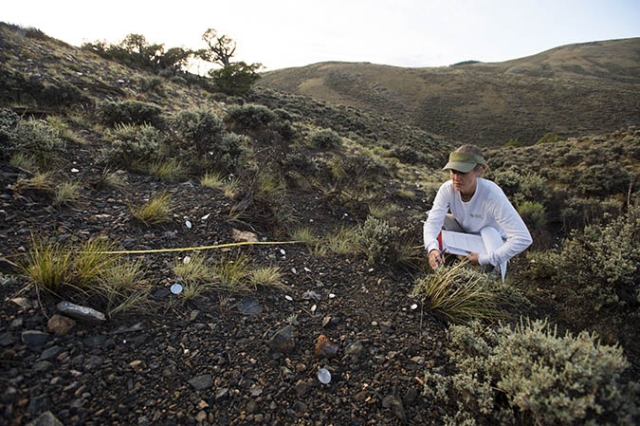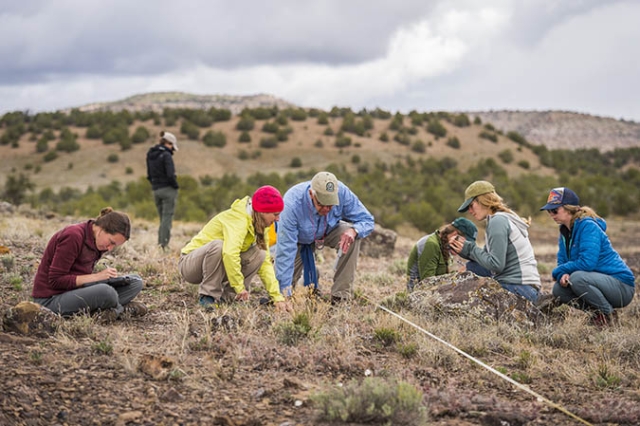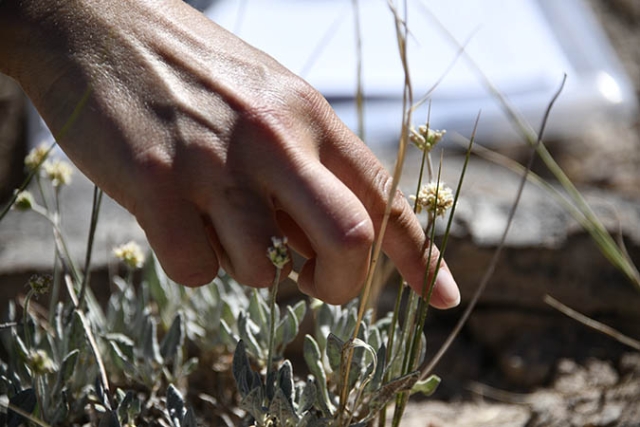Protecting Rare Plants with Science
The Endangered Species Act of 1973 is the primary law protecting rare and imperiled species and their habitats in the United States. The U.S. Fish & Wildlife Service is responsible for adding or removing species from the list, planning and implementing recovery actions, and managing interagency cooperation to restore and protect healthy plant populations and their environments. For these tasks, the U.S. Fish & Wildlife Service must use the “best available science.”
Luckily, Denver Botanic Gardens’ research staff and dedicated volunteers are out every year collecting data on rare and imperiled plant populations across Colorado. Two main ways we contribute to increasing scientific understanding of rare species is through long-term monitoring and genetic analyses.
We conduct annual or biannual censuses on three rare species reviewed by the U.S. Fish & Wildlife Service and have also contributed to population genetic data on two listed mustards from northwest Colorado.

Monitoring Astragalus microcymbus.
For 28 years, we have been monitoring Astragalus microcymbus, which was recently determined to be stable and not recommended for listing under the Endangered Species Act. We will continue to track this species for the foreseeable future and be prepared to provide data if conservation actions are needed.
Additionally, Sclerocactus glaucus has been recommended for delisting. Great work from the Colorado Bureau of Land Management has estimated that the population size is far larger than previously known. In combination with our population trend data, we can project a low chance of extinction in the near future, and our continued monitoring will be a check on this prediction.

Sclerocactus glaucus has been recommended for delisting.
Eriogonum brandegeei has now been through a review by the U.S. Fish & Wildlife Service to determine if listing is warranted. I provided data from our monitoring study spanning 19 years and participated in this review. I expect to learn of the decision next year. Our population genetic data is informative for the recovery plan of Physaria congesta and P. obcordata.

Eriogonum brandegeei
Through my Ph.D. program at the University of Colorado, Denver, I am exploring how to generalize plant responses to environmental variability drawing on these single species studies. I study how a species’ risk of extinction depends on its pace and mode of reproduction. I also build models to integrate the best available science and reduce uncertainty in population trend predictions. Through these efforts, I can predict how pace and mode of reproduction influences how species can persist by changes in phenology or by shifting in range. My hope is that such studies combined with our other ongoing research will help improve our management of rare species.
Even when a species is not listed under the Endangered Species Act, partnerships among Colorado scientists provide the knowledge and tools to both detect and work to prevent extinctions and conserve the biodiversity of Colorado’s flora.
Add new comment